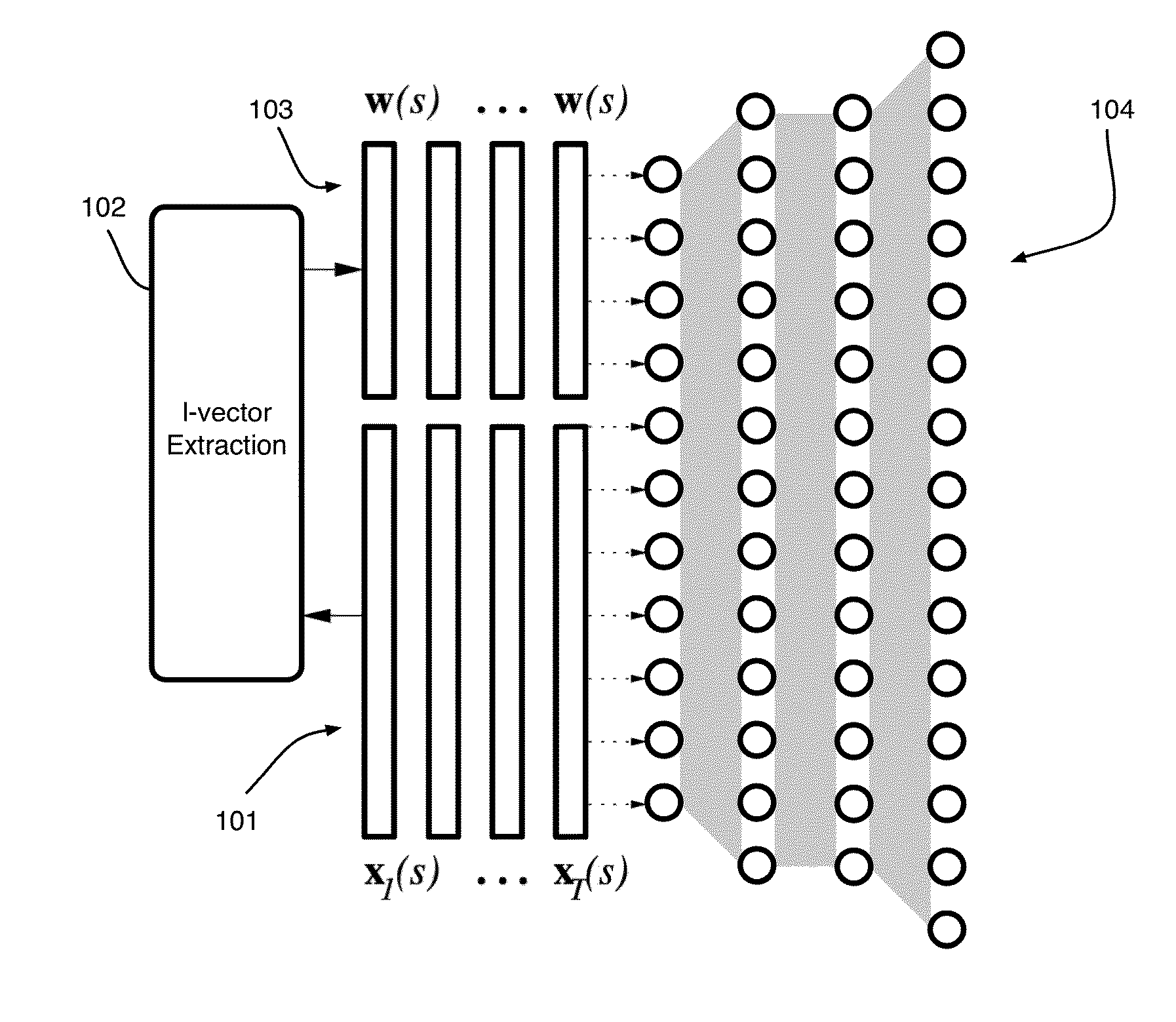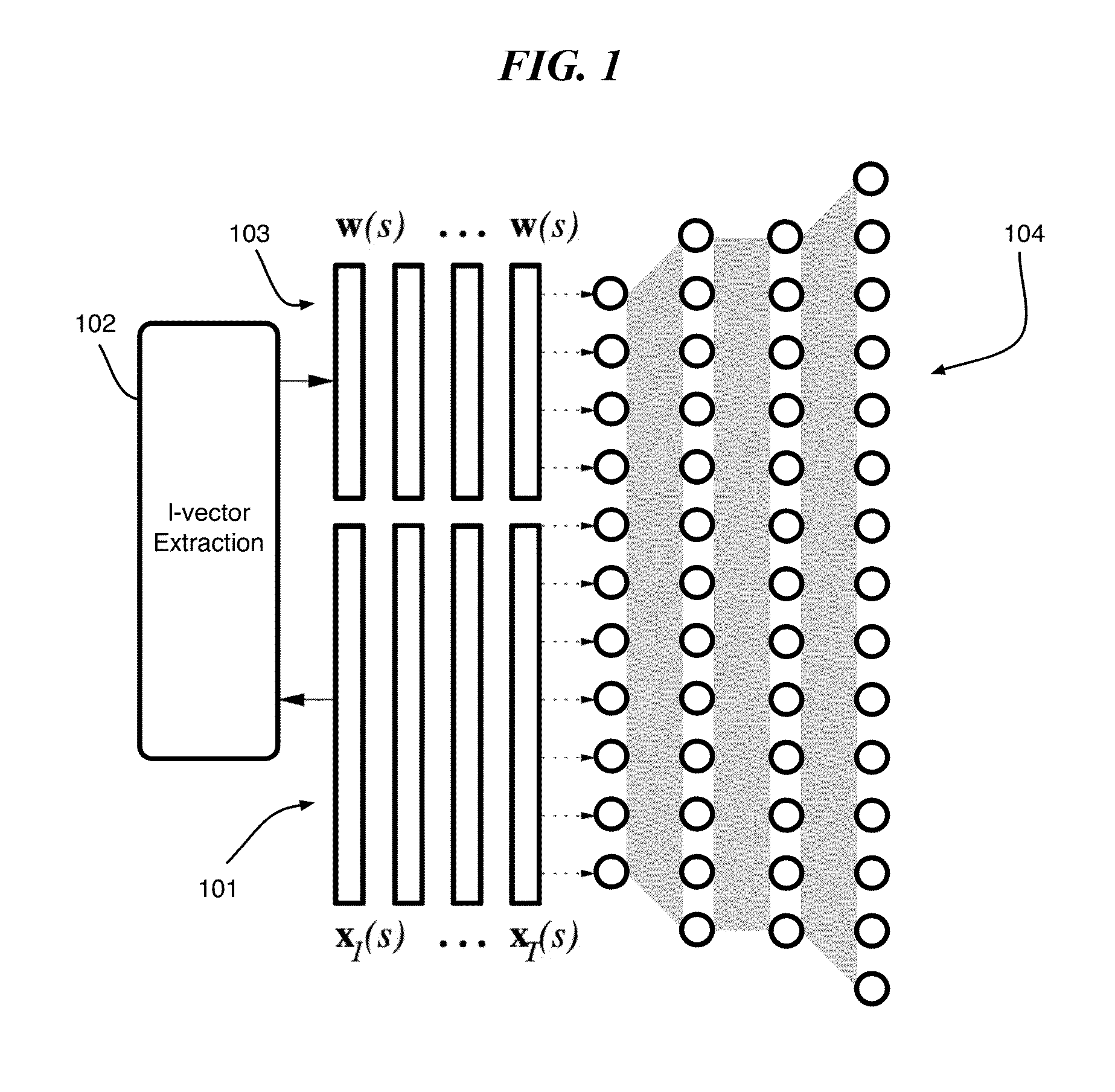Speaker Adaptation of Neural Network Acoustic Models Using I-Vectors
a neural network and acoustic model technology, applied in the field of acoustic modeling, can solve the problems of difficult to find structure in the weights of a neural network, and the portability of transform-based approaches like mllr that work well for gaussian mixture models
- Summary
- Abstract
- Description
- Claims
- Application Information
AI Technical Summary
Benefits of technology
Problems solved by technology
Method used
Image
Examples
Embodiment Construction
[0010]Deep neural networks (DNNs) have powerful applications in acoustic modeling due in part to the ability to learn in multiple levels corresponding to different levels of abstraction. Described herein are exemplary approaches for adapting DNN acoustic models to a target speaker by supplying speaker identity vectors (i-vectors) as input features to the network in parallel with acoustic features for automatic speech recognition (ASR). Furthermore, in one or more exemplary embodiments, the i-vector for a given speaker is concatenated to every frame belonging to that speaker and changes across different speakers for both training and test scenarios.
[0011]Speaker recognition features can be used in a variety of applications. For example, a DNN can learn speaker-dependent transforms for the acoustic features to create a canonical phone classification space (i.e., pronunciations according to formal rules) in which inter-speaker variability is significantly reduced. More generally, consi...
PUM
 Login to View More
Login to View More Abstract
Description
Claims
Application Information
 Login to View More
Login to View More - R&D
- Intellectual Property
- Life Sciences
- Materials
- Tech Scout
- Unparalleled Data Quality
- Higher Quality Content
- 60% Fewer Hallucinations
Browse by: Latest US Patents, China's latest patents, Technical Efficacy Thesaurus, Application Domain, Technology Topic, Popular Technical Reports.
© 2025 PatSnap. All rights reserved.Legal|Privacy policy|Modern Slavery Act Transparency Statement|Sitemap|About US| Contact US: help@patsnap.com



